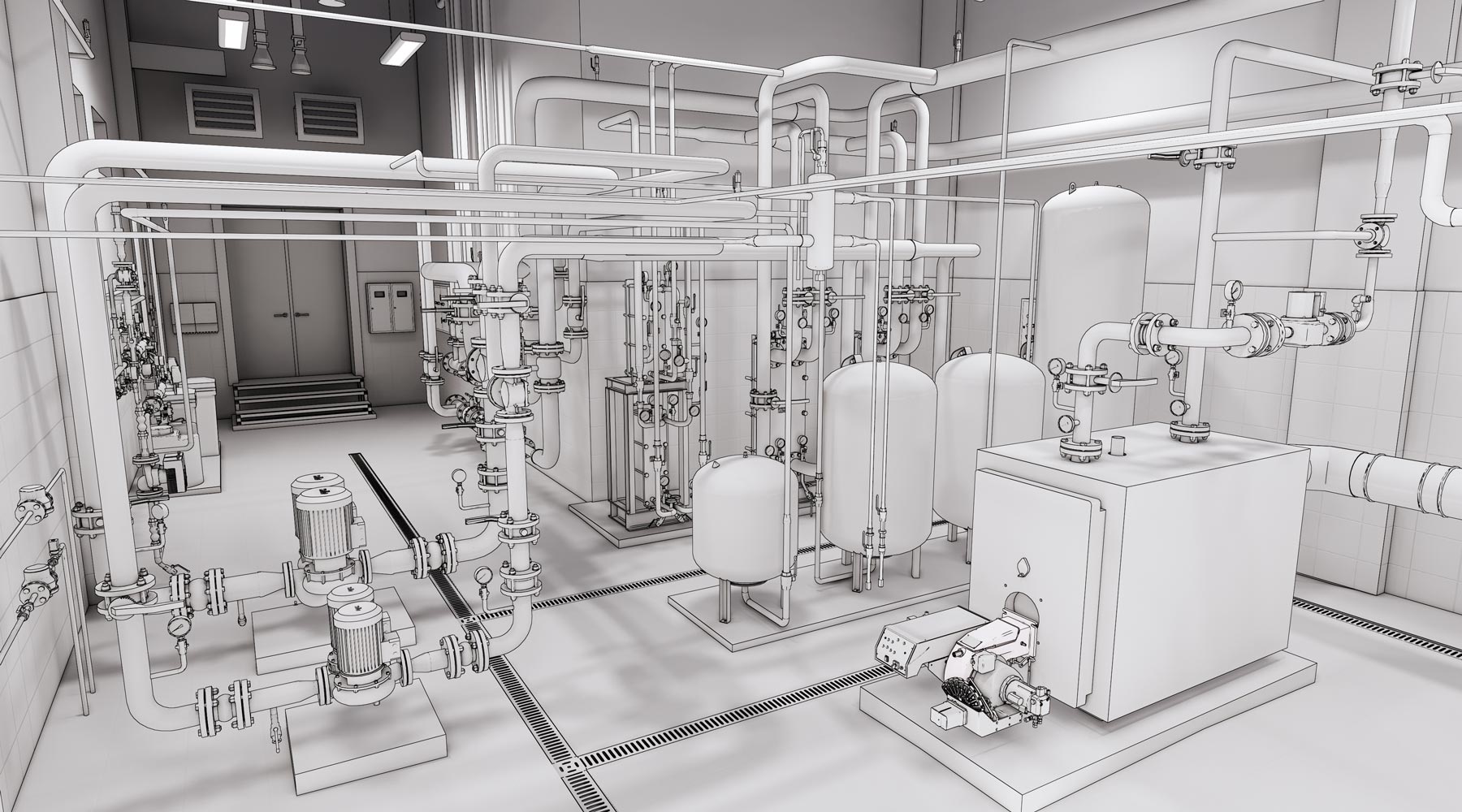When VBFA was challenged to come up with the most efficient mechanical system, we had to look beyond the typical mechanical systems that had been used in the industry to come up with an innovative solution. After outlining what uses energy in a typical building, we approached the problem holistically to find reductions in every energy use category. By combining various efficient technologies into a single building system, we were able to reduce energy use in all HVAC categories. Four of the reliable, energy-efficient technologies we used combined to provide an innovative, highly efficient mechanical system.
Ground Source Heat
Drawing from our vast experience with ground source heating and cooling, we decided to apply ground source heat at a central system level in lieu of the conventional unitary units. Utilizing ground source fluid-to-fluid heat pumps to heat hot water for the building (replacing gas boiler heat) opened the door for many central system energy saving and maintenance advantages.
Thermal Displacement Ventilation (TDV)
We have successfully applied TDV on many projects, with particular success in K-12 classrooms. TDV was selected for the superior ventilation effectiveness it brings, but many other energy benefits come along for the ride.
Indirect/Direct Evaporative Cooling
IDEC has been successfully applied in the local climate for more than 25 years. When IDEC is combined with TDV, mechanical cooling is almost eliminated.
Energy Recovery of Building Exhaust Air (ERV)
ERV’s have been widely used as a necessity for pre-tempering outside air on unitary heat pump systems and VRF systems. VBFA utilized this technology in central air handling units for heating mode only to pre-heat ventilation outside air.
VBFA met the super-efficient building challenge by combining these already proven technologies into a central system taking advantage of efficient ground source heat; TDV to ventilate more effectively; IDEC cooling not only doubling outside air economizer hours of a conventional system, but also essentially eliminating mechanical cooling; and heat recovery of building exhaust air to pre-heat ventilation air. VBFA has since used this engineering strategy to design many more highly efficient buildings.
Wade Bennion, P.E. Principal Mechanical Engineer
